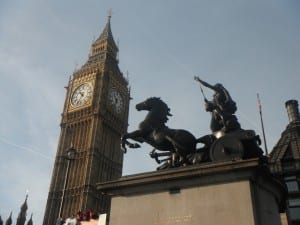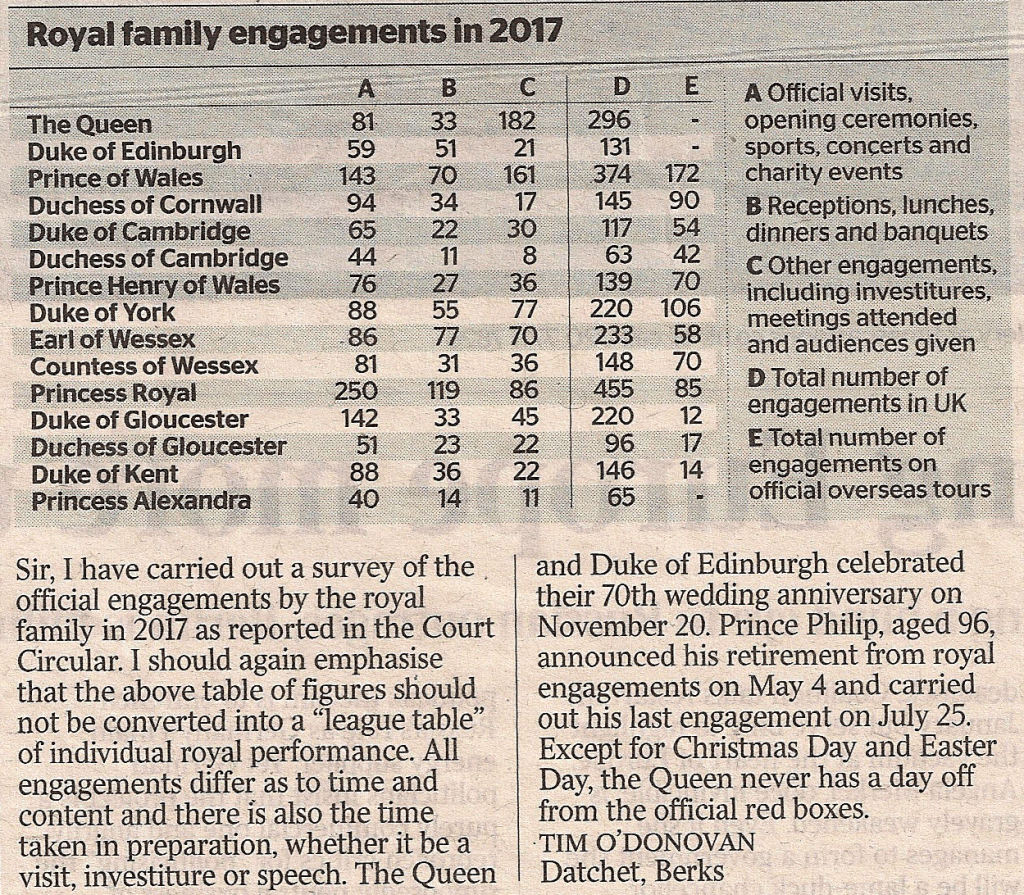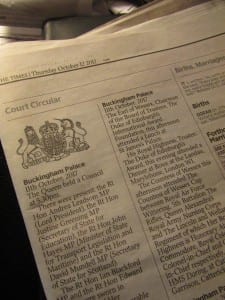 This post first appeared on the blog of the Political Studies Association Specialist Group on Parliaments. It was a follow-up to my earlier post about Labour’s use of an obscure piece of parliamentary procedure to force the government to release it’s Brexit impact assessments. Labour continued to use the same tactic in a number of subsequent debates but were eventually defeated in an opposition day debate on 2nd May 2018. Despite this defeat, it is argued here, Labour’s tactic did have the affect of forcing the Conservative government to engage with opposition day debates in Parliament.
This post first appeared on the blog of the Political Studies Association Specialist Group on Parliaments. It was a follow-up to my earlier post about Labour’s use of an obscure piece of parliamentary procedure to force the government to release it’s Brexit impact assessments. Labour continued to use the same tactic in a number of subsequent debates but were eventually defeated in an opposition day debate on 2nd May 2018. Despite this defeat, it is argued here, Labour’s tactic did have the affect of forcing the Conservative government to engage with opposition day debates in Parliament.
The opposition was defeated in a vote in the House of Commons this week. This is not particularly noteworthy, despite its lack of a majority, Theresa May’s government has lost very few votes in the House of Commons. Wednesday’s vote was nonetheless significant because this was the first time in this parliamentary session that the government has contested a vote in an opposition day debate.
Labour was defeated on a vote on its own motion tabled in an opposition day debate on the Windrush affair. There are twenty opposition days in a parliamentary session. They provide an opportunity for opposition parties to table a motion for debate on the floor of the House of Commons. Although opposition day motions are non-binding even if passed by a vote, opposition days provide a rare but important opportunity for the opposition parties to set the parliamentary agenda, raise important issues and seek to put pressure on the government. A government Minister must come to the House and respond to the motion and they are usually contested in a vote.
The Conservative government’s approach to opposition day debates
In the current parliament, however, the Conservative government has adopted a strategy of not contesting opposition day motions. As a result, motions have generally been passed without a vote. From the government’s perspective this has avoided the possibility of an embarrassing defeat in the division lobby and denied the opposition parties the satisfaction of defeating the government in a vote. In their frustration, opposition members have occasionally sought to force a vote by resorting to the tactic of shouting both in support and opposition to their own motion in the chamber, before walking through the division lobby in support of the motion. Although this tactic did lead to defeats for the government in two votes in late 2017, with the government, nonetheless, refusing to contest the vote, such victories might be seen as somewhat pyrrhic.
The government’s refusal to participate in votes on opposition day motions has prompted considerable consternation on both sides of the House of Commons and also on the part of the Speaker. Following an opposition day debate on universal credit in October, the Speaker expressed his irritation at the government’s position, noting that while the government could not be compelled to take note of the result of a non-binding motion it should nonetheless take note of the views of the House:
If people choose not to take part in a Division, they cannot suddenly say, “Well, we didn’t lose”. We are elected to come to this place to debate and decide what our position is on motions. If people choose not to vote, that is perfectly in order, as I have explained, but the motion was carried… it is not for me to seek to compel. What I will say to occupants of the Treasury Bench is that it is blindingly obvious that this is an unusual situation about which there is strong opinion, and I think it would be respectful to the House if a Minister, sooner rather than later, were to come to the House – perhaps after due consideration and collegiate exchange with other members of the Government – to give an indication of the Government’s thinking. This institution is bigger than one party, and, frankly, it is bigger than any one Government. This place and what we do here matter very much.
Prompted by this, in an attempt to force the government to take note of opposition day motions Labour adopted a mechanism designed to turn a non-binding opposition day motion into a binding resolution of the House of Commons. By the use of an obscure piece of parliamentary procedure, known as a motion for a return, Labour drafted an opposition day motion in the form of ‘a humble address to Her Majesty’ requesting the release of papers to parliament. Based on parliament’s power to call for papers, a motion for a return is binding and requires action on the part of the government. The government was caught out by this when Labour used it in an opposition day debate in November to call for the release of the so-called Brexit sectoral analyses, causing considerable difficulties for the government in seeking to explain what form these assessments took and eventually forcing the release of the relevant documents to the select committee for exiting the European Union.
Labour’s continued use of a motion for a return
Having devised a tactic which forced the government to take note of opposition day debates and moreover, to agree to the release of potentially embarrassing papers, Labour has continued to use this tactic in opposition day debates since November. In December, Labour used a motion for a return to prompt the release of several government assessments on the operation of universal credit. In January, it was used to call for the release of risk assessments in relation to government suppliers following the collapse of the construction company, Carillion. Labour tabled a further motion in relation to Brexit in January, calling for the release of a widely-leaked cross-Whitehall Brexit analysis setting out three possible scenarios for Britain’s future relationship with the EU. This document was eventually released and published by the select committee on exiting the European Union. In each of these cases the government, while objecting to Labour’s demands in debate, did not contest the vote and the motions were passed without a division.
In its latest opposition day debate, Labour tabled a motion for a return calling for the release of papers relating to the treatment of the so-called Windrush generation. This has been a particularly difficult issue for the government in recent weeks leading, amongst other things, to the resignation of the Home Secretary. The debate was well-attended with many members from both sides of the House wanting to speak. When the motion was eventually put to a vote the government, for the first time in this parliament, chose to contest the motion in the division lobbies. The vote is seems was heavily whipped by the government and Labour’s motion was defeated by 316 votes to 221.
Whilst this was a rare defeat for a Labour opposition day motion, it was perhaps a victory for parliament. The government was forced to debate the issue on the floor of the House of Commons. It provided another early opportunity to test the new Home Secretary, Sajid Javid, who was forced, for the second time in a week, to defend the government on the floor of the House of Commons, while the immigration Minister, Caroline Nokes, gave commitments to report regularly to the home affairs select committee on detentions, removals and deportations. Moreover, the debate concluded with a meaningful vote. Although Labour may have lost the vote, they can perhaps console themselves with the knowledge that for the first time in this session they forced the government to respond to their proposals and to engage fully with the parliamentary process.
Did Labour overplay its hand?
There are several possible explanations for Labour’s defeat. The government may have decided that it simply could not afford to suffer another parliamentary defeat, following several defeats this week on the EU withdrawal Bill in the House of Lords. The timing of the debate, the day before the local elections, may also have been a factor in prompting the government to contest the vote. Labour Whips may also have been caught out by the government’s decision to oppose the motion this time. Having been given free rein on opposition days during this parliament, they may have assumed the government would once again refuse to contest the motion. Moreover, the timing of the debate may have worked against Labour, with many Labour MPs on campaigning duties in advance of the local elections, while the vote was clearly strongly whipped by the Conservatives. While the Conservatives managed to mobilise the support of 308 out of their 316 MPs to oppose the Labour motion, Labour only managed to mobilise 180 of their 258 MPs in support. It is revealing that the 221 votes in support of the Windrush motion was significantly less than the 299 votes Labour had secured in support of an uncontested motion on universal credit in October.
Labour may also have overplayed their hand somewhat in seeking to deploy the same tactic for the fifth time in six months. The use of a motion for a return to press the government to release material was somewhat novel when Labour deployed it in relation to the Brexit sectoral analyses in November, but it could not hope to keep catching the government out with the same parliamentary trick.
Moreover, the Windrush motion was constructed in such a way that the government probably concluded that it simply could not be allowed to pass. On previous occasions on which the opposition has sought access material through a motion for a return, the motions have referred to a very specific and relatively limited body of material. In contrast, the material demanded in the Windrush motion was expansive in the extreme. The motion referred to:
all papers, correspondence and advice including emails and text messages, from 11 May 2010 up to and including 1 May 2018, to and between Ministers, senior officials and Special Advisers relating to policy decisions including on the Immigration Acts 2014 and 2016 with regard the Windrush generation cases, including deportations, detentions and refusal of re-entry, the setting of deportation and removal targets and their effect on the Windrush generation, and action taken within Government following the concerns raised by Caribbean Governments with the Foreign and Commonwealth Office including the original decision by the Prime Minister not to meet Caribbean Heads of Government and officials, and all copies of minutes and papers relating to the Cabinet’s Immigration Implementation Taskforce.
While parliament clearly has extensive powers to call for papers there would undoubtedly be a number significant challenges involved in producing this material. During the debate several MPs suggested that the motion was little more than a ‘fishing expedition’ which ran the risk of breaching the convention that parliament cannot ask civil servants to divulge their advice to Ministers. The practical difficulties involved in accumulating a body of records encompassing all forms of communications over a period of eight years are, perhaps, even more significant. Identifying and collating the relevant documents would clearly take many months and would, in all likelihood, comprise many thousands of pages. It is also somewhat strange that while, as with previous motions of this type, the motion asks that the material be released to the relevant parliamentary select committee, it seems that in this case the select committee concerned, the home affairs committee, does not appear to have been consulted about the motion. In the course of the debate on the motion, Yvette Cooper, the Labour Chair of the home affairs committee, perhaps mindful of the unrealistic nature of its demands remarked that the committee ‘have not instigated this call; nor have we had the chance to discuss or take a view on the motion, and we would of course decide how to respond. The motion itself is obviously a matter for the House, but we will continue to pursue our own questions as well.’
The treatment of the Windrush generation is an important issue on which many questions remain to be answered. However, in this case Labour’s opposition day motion was somewhat ill-conceived and did not achieve the same success which Labour’s previous attempts to deploy a motion for a return have undoubtedly secured. In future, Labour would, perhaps, be wise to be more circumspect and selective in their use of this tactic. At the same time Labour’s Windrush motion was successful in prompting the government to treat opposition day debates with the respect that they deserve. This is a welcome development and long may it continue.



